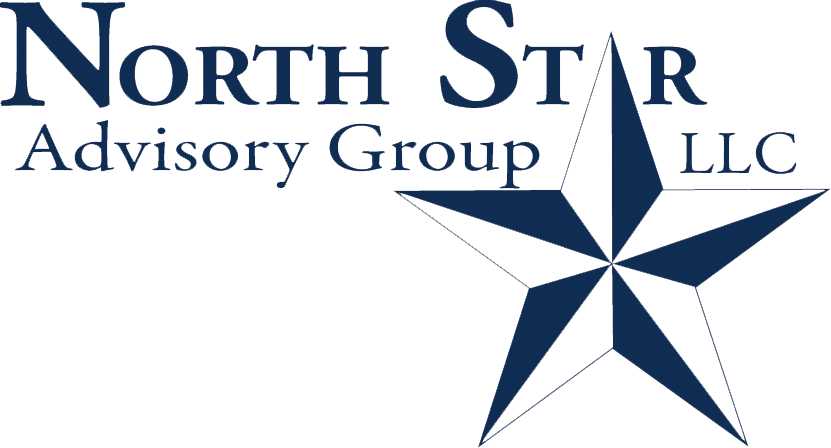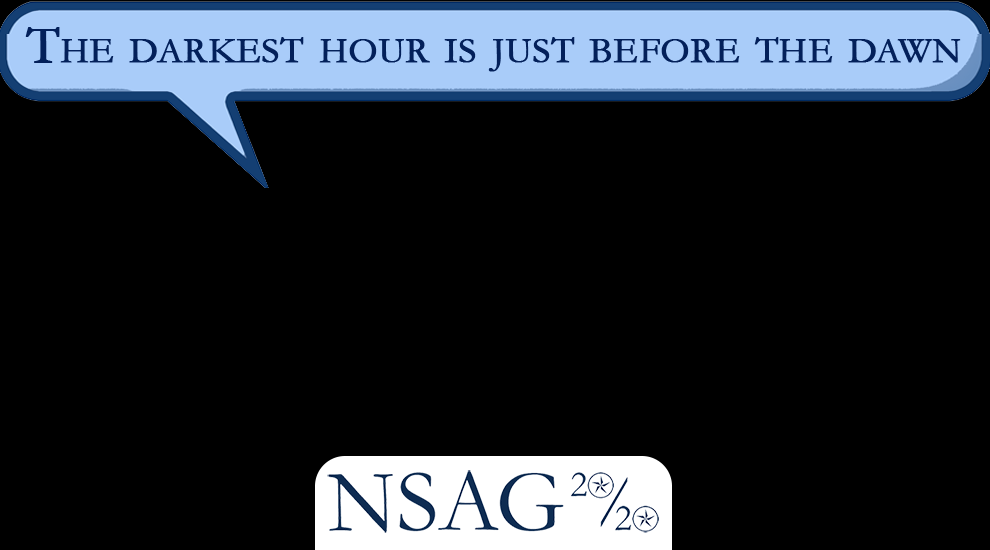Each month we ask clients to spend 5 minutes to read through our newsletter to with the goal of raising their investor IQ. What should investors be focusing on this month?
Things are going to get better. Let me repeat… Things are going to get better. As anticipated, this week we are hearing an increase in despair. The convergence of Easter, Passover, birthdays, Covid-19 death counts, school and business closures, stay at home orders, travel cancellations, record unemployment claims and frustration over government stimulus programs lay the groundwork for justifiable pessimism and depression. This is the week when we expect things to be darkest before just before the dawn.
On that sobering note, here are the key topics that we cover this month:
- Ohio is preparing to slowly reopen for business May 1st
- Portfolios are recovering to anticipated levels
- Unemployment claims soar, and they should!
- Conflicting recovery timelines
- Update on Federal Stimulus
- Covid-19 forces the life insurance industry to finally join the 21st century
- Where will the equity markets go next?
Ohio is preparing to slowly reopen for business May 1st
In effort to regain economic strength regionally, Ohio Governor DeWine announced plans to work with Michigan, Wisconsin, Minnesota, Illinois and Kentucky to coordinate efforts across the Midwest to slowly reopen for business. Details are still being worked out and will be a moving target to minimize the chance of a resurgence of Covid-19 outbreaks. Each state rolling out a re-opening plan is also preparing in case they need to reinstate stay-at-home orders again.
With recent announcements from Germany, Denmark, Austria we are starting to see other countries around the world slowly lift their restrictions and stay at home orders.
Testing & therapeutics will be the key to get people back to business as usual with increased levels of confidence for employees and consumers. Over the past few months hundreds of potential vaccines and therapeutics are being pushed through research and trials. 4/17/20 was the first day that we received promising results from a limited testing for a therapeutic treatment for Covid-19. While businesses may be allowed to resume 5/1, we expect employers to act prudently to protect their employees and customers/clients.
While North Star is considered an essential business and we have been working more than full time over the last few months, we did take a proactive approach to shut down our office on March 10th to in person meetings with clients and staff were sent home a few days later for 100% remote work. Even before we vacated the office, we put in place a plan to return roughly 2 weeks after businesses resume normal activity. Our target then was the end of May and it appears that we are still on that trajectory. Even after our return, we expect all client meetings will be virtual for a few weeks. We anticipate that some clients may choose to continue virtual meetings until Covid-19 is less of a risk.
Portfolios are recovering to anticipated levels
As the virus started to hit in late February, we did some quick calculations and foresaw the potential for a quick 15-20% dip with the equivalent of a full quarter of lost revenues for companies with the majority of earnings returning in 2021 once US containment was achieved and a treatment plan is put in place.
Shortly thereafter, an unforeseen global price war on oil broke out and prices dropped another 7%. This additional drop forced highly leveraged investors to sell and some investors to panic. This lead to a brief, but significantly oversold market with the momentum to fall further without government intervention to stabilize businesses.
Long story short… On 4/4, we still saw a ~20% chance to quickly retest the March lows. Now, we are back to the range that we anticipated in February and after the unprecedented moves from the Federal Reserve on 4/5/2020, we do not expect the markets to retest their March 2020 lows. The S&P 500 is currently forecasted to see 22% lower earnings in 2020 than two months ago.
We do have clients slowly deploying additional cash into high quality companies who are able to raise cash and ride through a deep, but quick recession.
We have also had several calls with the mangers of the various mutual funds that we are invested in. Each manager has been proactively upgrading the quality of the names in their funds. For example, one fund provided details that they sold 5 stocks which reduced their dividend and redeployed the cash into companies with higher growth potential going forward. It is due to these underlying changes, that we do not currently see the need to make any wholesale changes to client portfolios at this time.
Unemployment claims soar, and they should!
Stimulus bill #3 put in place an additional $600/week or $15/hour supplemental unemployment income in addition to the standard benefits provided by each state. While state benefits vary, they generally provide for a benefit of 50% of the workers prior earnings and the formula gets reduced for high wage earners. Lets do some quick and simple math for a worker who was just laid off or furloughed who was making $50k/yr…
- $50k/yr = $962/week
- 50% unemployment = $481/week benefit from the state
- +$600/week Federal temporary benefit
- = $1,081/week in unemployment benefits or 12% increase in pay
The lower the income the higher the incentive for the employer and employee to utilize unemployment. To show this disparity, lets look at a retail worker making $20k/yr or $10/hr.
- $20k/yr = $10hr or $400/week
- 50% unemployment = $5hr or $200/week
- +$600/week Federal temporary benefit
- = $800/week in unemployment benefits or $20/hr or 200% increase in pay
We have already been hearing from clients that their kids or other friends have plans to increase their spending based on the higher take home pay from unemployment and stimulus checks. While we would not recommend this behavior, this does provide an example of why we encourage people not to underestimate the amount of additional capital that is being pumped through the economy from the various stimulus/stabilization programs.
Conflicting recovery timelines
It is possible to see the market recover close to prior highs by yearend 2020 while the economic recovery maybe delayed until mid to late 2021. Market valuations reflect earnings 6-12 months out. This is why we are seeing the market rally at the same time that we are experiencing peak number of new daily cases, deaths and unemployment. We do need to remember that we are going through a rapidly evolving situation with tough days ahead. Companies will increase the accuracy of their earnings forecast as we get better clarity on the trajectory of the virus.
Update on Federal Stimulus
Americans are starting to receive their stimulus checks for $1200, $2400 and $500. While there are hiccups in the distribution, checks are going out at a record pace. If you are eligible for a check and did not receive one, you can setup your payment info with the IRS by clicking HERE. The following are a few facts to combat myths on the checks.
- You will not be taxed on the income.
- You will not have to pay the amount back.
- It will not take months to receive the money.
- Social Security recipients are eligible to receive a check.
- You can get a check even if you didn’t file your 2019 taxes.
The Paycheck Protection Program (PPP) ran out of its initial $349 billion funding on 4/16/20. It is expected that additional rounds of replenishment of $250 billion will be approved this weekend with additional rounds as needed in future weeks. If Congress delays approving the additional funding, the Treasury is considering purchasing the PPP loans from the banks to open up additional loan capacity. In the last two days, clients have finally started receiving approvals for their loans. It is now important to shift from applying for the loan to planning to properly spend the loan. Later this summer, loan recipients will be able to apply to have some or all of the loan converted into a grant. We are happy to have a brief call to help create a plan for your business to properly spend the money.
While details are limited, additional support programs are being written right now to provide additional federal support to municipalities and hospitals. It sounds like partial funding for this program may come alongside additional funding for the PPP.
Stimulus Bill #4 is being drafted and is expected to be voted on in June 2020. The first three bills were focused on stopping the economy from collapsing. Bills #4 and #5 will focus on putting the US and global economies on a path towards recovery and potentially a stronger economy. The budget for Bill #4 is expected to exceed $2 Trillion. Some of this funding may come from other allies / governments who have previously expressed an interest in investing in America to strengthen their tie to our country. While the list of targeted investments continues to change week-by-week, the current list includes:
- Building new community health centers
- Clean water for Flint Michigan and other communities
- Telecom & Utility upgrades
- High speed charging infrastructure for cars
- Increasing the electrical grids
- Battery manufacturing
- Better recycling facilities
- Highway and bridge repairs
- Airport upgrades
Covid-19 forces the life insurance industry to finally join the 21st century
You know that NSAG is a high utilizer of technology. Unfortunately, the insurance industry has been very slow to adapt to digital communications, signatures and underwriting. In response to Covid-19, we have seen many of our companies adapt to our contactless and digital world. Currently, we are able to underwrite policies for <$1M for clients <60yrs old without a requirement for a physical exam or physical signature.
Where will the equity markets go next?
Our vision and communication has not changed since 2010. We still believe we are in a secular bull market, which typically lasts around 15 years. Historically, it is not uncommon to have a bear market (which essentially occurred in Q4 of 2018) or even a brief recession (which we may be experiencing right now) during a secular bull market. Markets will trade on fear or momentum from time-to-time. In-between earnings reports, the markets may even trade on a single data point (like the new cases and death count of Covid-19). Eventually, the markets return to trading on fundamentals. We believe that fundamentals will not return until we get into Q3-2020 and the Fed and Treasury are doing a tremendous job of providing a financial bridge to get through the next few months.
We are passionately devoted to our clients' families and portfolios. Let us know if you know somebody who would benefit from discovering the North Star difference, or if you just need a few minutes to talk.
As a small business, our staff appreciates your continued trust and support as we all work through these stressful and trying times for our country and world.
Please continue to send in your questions and see if yours gets featured in next month’s Timely Topics.
Best regards,


Mark Kangas, CFP®
CEO, Investment Advisor Representative


